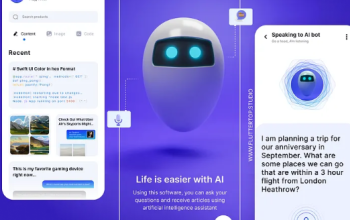
In today’s fast-paced business world, manual data entry is quickly becoming a relic of the past. Especially when it comes to expense reporting, employees and finance teams alike are moving away from the tedious process of sorting paper receipts and inputting details line by line.
Instead, businesses are turning to OCR (Optical Character Recognition) and smart scanning technology to simplify, speed up, and streamline expense management from start to finish.
The Burden of Manual Expense Reporting
Before the rise of automation, expense management was a time-consuming process:
- Employees had to store and organize physical receipts.
- Data had to be manually entered into spreadsheets or systems.
- Errors were common, and reconciliation often took days or even weeks.
- Finance teams faced delays in approvals, policy violations, and inaccurate reports.
This outdated process not only frustrated employees but also drained valuable time and resources from finance departments.
What Is OCR and Smart Scanning?
OCR (Optical Character Recognition) is a technology that converts different types of documents—such as scanned paper receipts, PDFs, or images—into editable and searchable data. When combined with smart scanning, which includes AI and machine learning capabilities, expense tools can read, understand, and categorize receipt data automatically.
Together, they allow:
- Instant digitization of paper receipts
- Auto-population of expense fields (merchant, date, amount, category)
- Error detection and validation
- Seamless integration into expense reports
This significantly reduces the need for human intervention, while increasing accuracy and compliance.
Key Benefits of OCR in Expense Management
1. Time-Saving Automation
Smart scanning tools can extract data from a receipt in seconds, allowing employees to snap a photo and move on. This eliminates hours of manual entry every month.
2. Improved Accuracy
By reducing the reliance on human input, OCR minimizes typos and calculation errors. Receipts are interpreted with precision, and inconsistencies are flagged immediately.
3. Faster Reimbursements
As expenses are submitted and approved faster, employees receive reimbursements without the usual delays, boosting morale and financial transparency.
4. Better Compliance and Policy Enforcement
OCR tools can identify whether a receipt is valid, duplicate, or missing key information. They can also check for policy compliance automatically, reducing the burden on finance teams.
5. Real-Time Data Availability
Captured data flows instantly into reporting dashboards, giving decision-makers a clearer picture of where money is being spent at any given time.
Looking Ahead: A Smarter Future for Expenses
As expense tools continue to evolve, the role of OCR and smart scanning will only expand. With the integration of AI, these systems will soon be able to:
- Predict categories and tags based on spending patterns
- Offer suggestions for more cost-effective purchases
- Detect potential fraud in real-time
Conclusion
OCR and smart scanning have redefined how businesses manage expenses. What once required hours of effort can now be handled in seconds, with greater accuracy, speed, and insight. From the moment a receipt is captured to the final report, these technologies ensure that expense management is no longer a chore but a seamless, strategic part of business operations.
